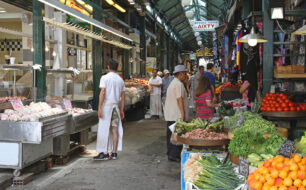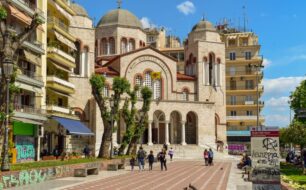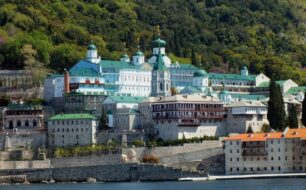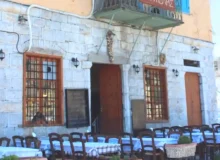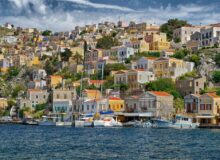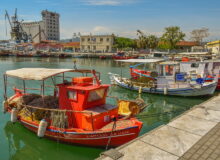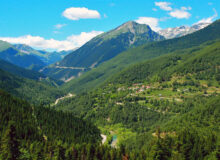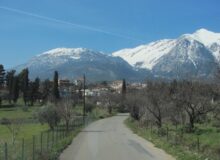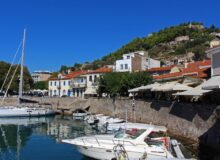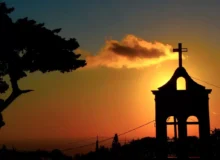See Greece’s guide to Thessaloniki with a brief history of Greece’s second city, a look at the best time to visit and a list of its main attractions.

Thessaloniki: Introduction
Thessaloniki, sometimes referred to as Salonika, is Greece’s second-largest city and one of its most culturally significant urban centers. Located in the northern part of the country, it serves as the capital of the Macedonia region and is a vibrant hub of history, commerce, and tourism. With a rich past that dates back to ancient times, Thessaloniki has been shaped by various civilizations, including the Hellenistic, Roman, Byzantine, and Ottoman empires. Today, it is renowned for its archaeological treasures, lively waterfront, and dynamic cultural scene.
This overview explores Thessaloniki’s geographical location, its historical significance—including its connection to Alexander the Great—its Mediterranean climate, and its most notable attractions.
Location and Geography

Thessaloniki is situated in northeastern Greece, nestled between the Thermaic Gulf and the foothills of Mount Chortiatis. Its coordinates are approximately 40.6401° N, 22.9444° E, placing it in a strategic position along major trade routes between Europe and Asia.
The city’s port has been a crucial economic gateway for centuries, facilitating commerce and cultural exchange. Thessaloniki is also well-connected to other major Greek cities, with Athens located about 500 kilometers (310 miles) to the south and the border with North Macedonia just 80 kilometers (50 miles) to the north.
Due to its location, Thessaloniki has historically been a melting pot of cultures, religions, and traditions, which is still evident in its architecture, cuisine, and festivals.
A Brief History: From Alexander the Great to Modern Times

Foundation and Hellenistic Era
Thessaloniki was founded in 315 BC by Cassander of Macedon, a general and successor of Alexander the Great. He named the city after his wife, Thessalonike, who was Alexander’s half-sister. The name itself carries historical weight—Thessalonike means “victory in Thessaly,” commemorating Alexander’s triumph at the Battle of Crocus Field. Although Alexander the Great never lived in Thessaloniki (as it was founded after his death), the city flourished under Macedonian rule and became an important center of the Hellenistic world.
Roman and Byzantine Periods
In 168 BC, Thessaloniki fell under Roman control and grew into a major trade and military hub. The Via Egnatia, a crucial Roman road connecting the Adriatic Sea to Byzantium (later Constantinople), passed through the city, enhancing its economic importance.

During the early Christian era, Thessaloniki became a significant center for the spread of Christianity. The Apostle Paul the Apostle visited the city in 50 AD and wrote two epistles to its Christian community (the Epistles to the Thessalonians in the New Testament).
When the Roman Empire split, Thessaloniki became the second-most important city of the Byzantine Empire after Constantinople. It was fortified with massive walls, many of which still stand today, and became a center of Byzantine art, religion, and scholarship.
Ottoman Rule and Modern Era
In 1430, Thessaloniki was conquered by the Ottoman Empire and remained under Turkish rule for nearly 500 years. During this time, it became a multicultural city with large Jewish, Muslim, and Christian populations. The city’s Jewish community, in particular, thrived, especially after the expulsion of Jews from Spain in 1492.
Thessaloniki was liberated and incorporated into Greece in 1912 during the First Balkan War. However, the city suffered greatly during World War II, when most of its Jewish population was deported and killed in the Holocaust.
Today, Thessaloniki is a modern European city that honors its diverse past while embracing contemporary growth and development.
Thessaloniki’s Climate: Mediterranean with Seasonal Variations

Thessaloniki enjoys a Mediterranean climate (Köppen: Csa), characterized by hot, dry summers and mild, wet winters.
– Summer (June–August): Temperatures often exceed 30°C (86°F), with occasional heatwaves pushing temperatures above 35°C (95°F). The sea breeze from the Thermaic Gulf provides some relief.
– Autumn (September–November): Mild and pleasant, with occasional rainfall. This is one of the best times to visit.
– Winter (December–February): Cool and humid, with temperatures averaging 5–12°C (41–54°F). Snow is rare but possible.
– Spring (March–May): Gradually warming, with blooming flowers and fewer tourists.
Thessaloniki’s climate makes it a year-round destination, though the best times to visit are spring and early autumn when the weather is most comfortable for sightseeing.
Main Attractions in Thessaloniki

1. The White Tower (Lefkos Pyrgos)
– The symbol of Thessaloniki, this 15th-century Ottoman tower was once part of the city’s fortifications.
– Today, it houses a museum detailing Thessaloniki’s history.
– The rooftop offers panoramic views of the city and the Thermaic Gulf.
2. Aristotelous Square
– The heart of the city, designed by French architect Ernest Hébrard in the early 20th century.
– Lined with cafes, restaurants, and historic buildings.
– A prime spot for festivals, concerts, and public gatherings.

3. Rotunda and Arch of Galerius
– The Rotunda, built by Roman Emperor Galerius in 306 AD, was intended as a mausoleum but later served as a church and mosque.
– Nearby, the Arch of Galerius commemorates Roman military victories.

4. Hagia Sophia of Thessaloniki
– An 8th-century Byzantine church, modeled after its namesake in Istanbul.
– Features stunning mosaics and frescoes.
5. Archaeological Museum of Thessaloniki
– Showcases artifacts from prehistoric times to late antiquity, including treasures from Macedonian tombs.
– Highlights include golden wreaths, statues, and everyday objects from ancient Thessaloniki.

6. Church of Saint Demetrius (Ayios Dimitrios)
– Dedicated to the city’s patron saint, a Roman soldier martyred in 303 AD.
– Houses Byzantine mosaics and the crypt where St. Demetrius was imprisoned.
7. Ladadika District
– A historic area with Ottoman-era buildings, now home to tavernas, bars, and live music venues.
– The perfect place to experience Thessaloniki’s nightlife and bouzouki culture.

8. The Waterfront (Nea Paralia)
– A 5-kilometer promenade along the Thermaic Gulf, ideal for walking, cycling, and sunset views.
– Features sculptures, gardens, and open-air cafes.
9. Ano Poli (Upper Town)
– The oldest part of Thessaloniki, with narrow cobblestone streets and traditional houses.
– Offers the best views of the city and retains a Byzantine and Ottoman atmosphere.
10. Museum of Byzantine Culture
– Award-winning museum displaying religious art, icons, and artifacts from the Byzantine era.
– Provides deep insight into Thessaloniki’s role in the Byzantine Empire.
Thessaloniki is a city where ancient history and modern vibrancy coexist. From its founding by Cassander in honor of Alexander the Great’s sister to its days as a Byzantine stronghold and Ottoman trade center, the city has always been a crossroads of cultures.
Today, visitors can explore its Roman ruins, Byzantine churches, Ottoman landmarks, and bustling waterfront, all while enjoying its warm Mediterranean climate. Whether you’re a history enthusiast, a food lover, or simply seeking a dynamic urban experience, Thessaloniki offers an unforgettable journey through time. As Greece’s cultural capital in the north, Thessaloniki remains a must-visit destination for anyone eager to discover the rich tapestry of Greek heritage.

